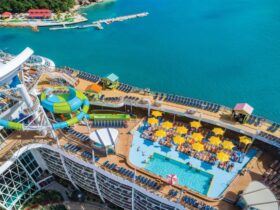The ancient walled fortress of the Imperial City in Huế, Vietnam, is a wonder as stunning as its Chinese counterpart
Photos: Shutterstock

Photo: danielcastromaia / Shutterstock.com
Speak of the Forbidden City and grand images of Beijing’s ancient palaces and citadels often come to mind. Not many know about this other hidden Forbidden City in Hue, the former imperial capital of Vietnam. At 520ha, the Imperial City remains the most massive structure ever built in the country.
After the last of the Vietnamese Emperors in 1945, the City was almost entirely destroyed in wars; but when the site was declared a UNESCO site in 1993, its remaining buildings have undergone restoration and preservation.
Despite this, the site still sports the scars of time, war and natural wear that exude a humble but strong stoicism. Here, the history and hidden charm of Vietnam come alive.
ADVERTISEMENTS











Leave a Reply